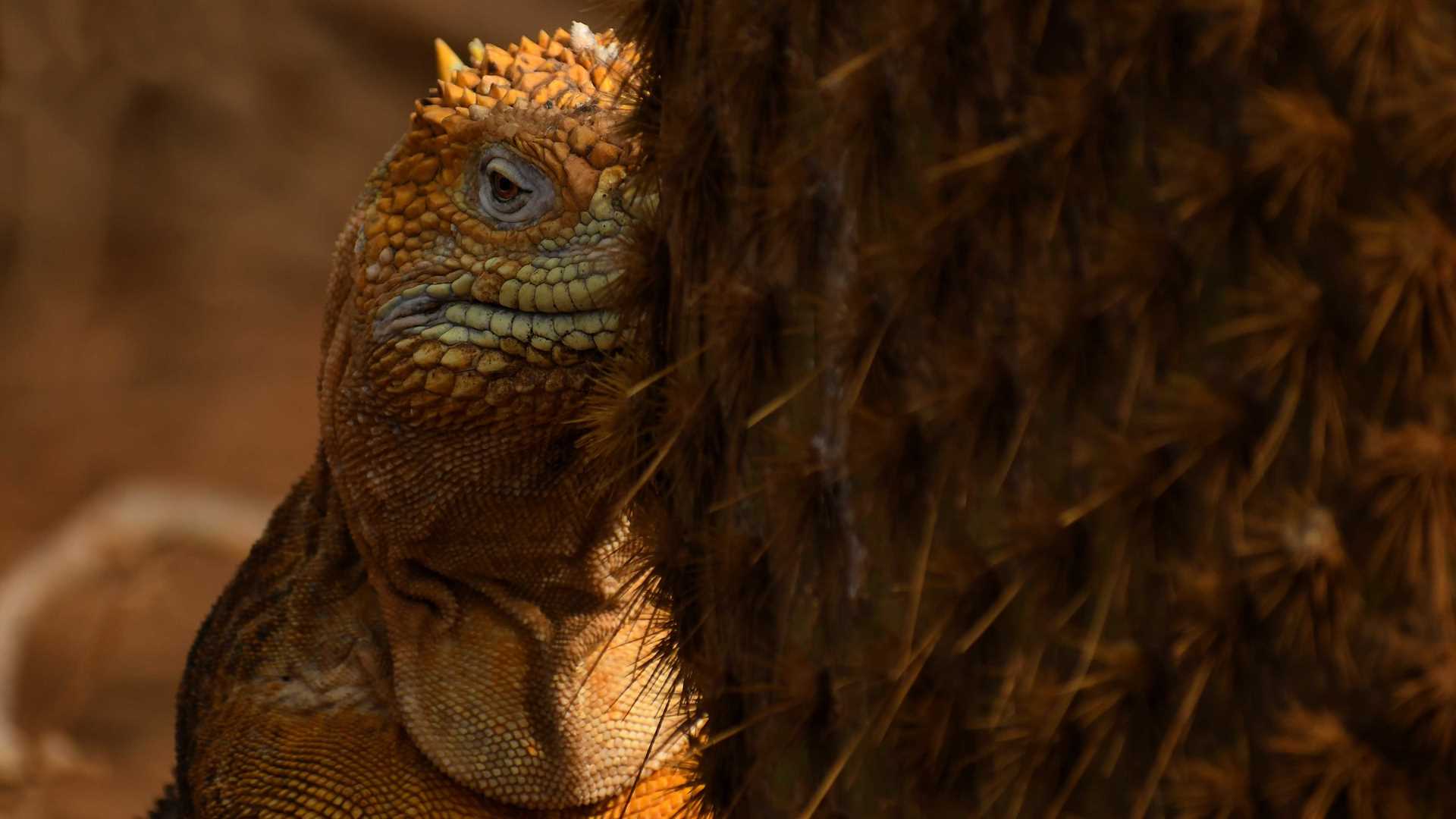The calm has come to the ocean again, it is the season in Galapagos where the trade winds stop influencing the weather, and the warm waters from the north have extended a wet layer of loaded clouds over the horizons. Now a light but steady rain drips along the rocks, soaks into the ground and brings plants to life again. Very soon, the landscape of ashes, burnt by a year of sun, will dress in a fresh green forest.
This refreshing climate is actually more enjoyable than the heat of the sun that normally accelerates our steps in search of a shade. We are all relaxed and ready to discover the island—North Seymour is a highlight of the trip.
We are welcomed by a very active colony of frigates and blue-footed boobies; the island is currently experiencing an influx of many sea birds that are seeking mates to ensure the perpetuation of their species. February and March are very active when it comes to nesting and reproduction. In addition, on the trail, many land iguanas are anxious for the return of the rain, as they depend on the many plants and fruits for their food source. Lava lizards are getting their food from the sea lions basking on the beach along the coast, they wait for insects to land on them before swooping in to pick them off, and it turn, helping sea lions to get rid of them. After having a great morning walk and exploration, we came back onboard.
In the afternoon, we found our next destination as a barely distinguishable land mass. The outline was fading into the accumulation of low clouds, and the soft curtain of fog was blurring the landscape in pale hues of grey and red.
Our first activity at Rabida Island was snorkeling along the coast. We jumped into the blue calm ocean, and we were greeted immediately by a white-tipped reef shark that was swimming along at a very slow pace. It was a great beginning, but later more surprises came. We found a big marbled ray, a diamond ray, sea lions and schools of multicolored fishes. The ocean floor was fully covered by sea urchins, heads of corals and different types of sea stars. Later in the afternoon, we went to walk along the red beach that decorates the shoreline of Rabida. It is a big quantity of iron oxide that makes the sand so red, while the saltbushes are green against the blue sky. This symphony of colors creates a unique and astonishing scenery.
However, what we will remember above all from that visit is the peaceful and tame behavior that the animals show in our presence—sea lions resting on the beach, finches and mockingbirds approaching us without fear. We are probably more ignored than accepted, but this feeling of being a part of this place is indescribable.
No doubt, this day marked a hit in our memory!







